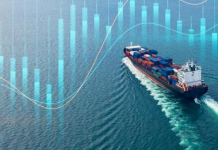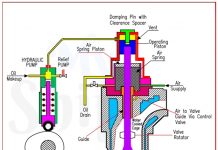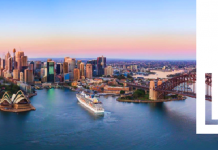
Q. Name the present ISO standard for marine fuel oil and explain salient features of it. With reference to a fuel oil analysis report, explain relevant corrective actions which can be initiated against various adverse observations in it.
Answer:-
Present ISO standard and its salient features –
- ISO 8217 specifies the requirements for petroleum fuel for use in marine diesel engines and boilers prior to appropriate onboard treatment before use.
- There has been a total of 6 editions of ISO 8217 till now, the sixth and presently used edition is ISO 8217:2017.
- The purpose of ISO 8217 is to define the requirements for petroleum fuels for use in marine diesel engine and boiler, prior to appropriate treatment before use, and is provided for the guidance o interested parties such as marine equipment designers, suppliers and purchasers of marine fuels.
- These specification are regularly revised to accommodate changes in marine diesel engine technology, crude oil refining process and environmental developments.
- The sixth edition of ISO 8217 introduced DF (Distillate FAME) grades which allowed upto 7 % FAME (Fatty Acids Methyl Easters) contained by volume. Following are its benefits
- Allows greater use of automotive diesel in marine.
- Improves fuel oil availability in some ports, which may struggle to provide fuels with 0.10% sulfur limits.
- Other grades under ISO 8217 shall not include FAME other than a maximum allowable limit of 0.5% (Earlier limit 0.1%)
- The latest edition has introduced a requirement to REPORT cloud point (CP) and cold filter plugging point (CFPP), to let the operator know in advance if the fuel will require heating.
- The scope has been expanded to include hydrocarbons from petroleum, crude oil and from synthetic or renewable sources and also from oil sands and shale.
- General requirement for fuel have been redrafted considerably to include hydrocarbon from non petroleum sources and blend with FAME component.
- Sulfur limits have been reduced from 1.5% to 1.0% by mass.
- ISO 4259 standard will be used for interpretation of results in case of disputes.
- Fuel analysis is done in shore laboratories. They check for all characteristics as recommended in the ISO standard. Following are some of properties which can be found outside the limit & their corrective action:-
Density:-
- Max limit is 991 kg/m3 (for the RMG grade) & 1010 kg/m (for the RMK grade).
- Increased density will affect the centrifuge operation.
- It will be ineffective in water separation. It will affect the engine performance.
- If received bunker density is more than the specified limit inn RMG grade then its better to de-bunker it unless vessel has ALCAP purification system.
Viscosity:-
- At 50 deg Celsius common viscosity for residual fuel is 180 cst or 380 cst, but it can go up to 700 cst.
- It affects pump ability, preheating, settling/separation, atomization and combustion. Increased viscosity is not a problem unless vessel has got sufficient heating arrangements.
- Analysis report will state the correct amount of temperature to which the fuel should be heated to maintain the viscosity as prescribed the engine manufacturers.
Sulphur:-
- It is now guided by the statutory requirements.
- If the value comes more than the maximum specified by regulation, bunkers will required to be debunkered. But, if the sulfur content comes too low then correct grade of the CLO will have to be used to avoid cold corrosion or alkaline deposits on the piston top land.
Cat-fines:-
- Max limit is 60 ppm.
- The main problem with the cat-fines is that they are not always evenly distributed & sometimes are accumulated in sediments.
- They are very difficult to remove as they are attracted to the water droplets.
- To minimize the cat-fines key feature is to remove them by separation in the separators.
- For that always maintain the purifiers in accordance with the manufacturer’s recommendation. Assure that the separation is being performed efficiently by minimizing the feed & optimizing the temperature. Never by-pass the fine filters given in the fuel line. It is fine to keep one extra clean set & change them at regular interval. Maintain the fuel at above 70°C in the settling tank & drain settling & service tanks at the regular intervals.
Water:-
- It is allowed up to 0.5% V/V for residual fuel and 0.3% for distillate fuel.
- Fresh water contamination will lead to corrosion damage to fuel pumps and injectors.
- However serious problems arises if the water content is sea water.
- It becomes more serious because of sodium content in sea water. Sodium along with vanadium in 1:3 can cause high temperature corrosion.
- It is recommended to remove the water content by centrifuge separation, giving sufficient setting time in settling tanks, Sufficient heating in settling tanks and by frequent draining of the settling/service tanks.
Ash:-
- Recommended value is 0.15% m/m for residual fuels.
- High ash content leads to deposits on the piston surface, exhaust valves, turbocharger blades & boiler tubes.
- During the combustion metal content is converted into solid ash which after certain temperature become partly fluid thus adhering to all parts stated above causing corrosion problems.
- Ash removal is recommended by the frequent cleaning of the parts. Turbochargers should be regularly dry washed or wet washed. Boilers should be frequently soot blown & cleaned with water.



